Today, the Portuguese vineyards cover 248,000 hectares, making it the eighth largest in the world and the fourth in Europe after Spain, France and Italy. The vineyards are mainly located in northern and central regions; its main production regions are the Estremadura, the Douro, the Minho, the Alentejo, the Terras do Sado, the Beiras, the Bairrada and the Dao region.
[CustomTables]
You would think that France invented designations of origin, but the fact is that Tuscany and Hungary was responsible for this idea, between the sixteenth and the eighteenth century. Today, Portugal has 27 appellations (called DOC) and 4 classified wine IPR (the equivalent of VDQS in France). It must be said that apart from Porto where corporate concentration is extreme (the first four houses represent 80% of the production), the rest of the Portuguese vineyard is particularly fragmented.
The average farm size is just over 1 hectare and cooperatives represent for about half of the production. For fifteen years, the Portuguese viticulture, -just like other European producers- turned to a qualitative production. Porto and Madeira are the locomotives of this progress.
Contrary to popular belief, it was not the port that has revitalized the Portuguese wine industry following the ravages of phylloxera but the vinho verde, the famous dry white wine. The rest of the country followed by producing quality, dry white wines with greater precision in the winemaking process.
Slower pressing, beneficial use of indigenous yeasts… The Alentejo in the south of the country produces 30% of white wines, which are really interesting. The Douro, the home of port wine, now offers increasingly complex dry white wines. And above all, Portugal has retained its indigenous white varieties.
Donzelinho branco, Gouveia, Malvasia Fina, Rabigato, Loureiro and Viosinho offer aromatic wines with beautiful density in the mouth. Like at Niepoort, the quintas produce increasingly fragmented vintages and the fields are very sensitive to interactions between grape, soil and climate. Beautiful discoveries in perspective, and at a very attractive price!
The Marquis of Pombal had the intelligence to create one of the first designations of origin of history in 1756, Porto, but Portugal has not followed this pattern in other wine regions until the early twentieth century. And it was only after joining the EU in 1986 that the country aligns its bounding system with those of other European countries, particularly France. Today, the wines are classified into two major categories of table wines and quality wines, each with two levels of quality.
Vinho de mesa
“Basic” table wine, often branded wines. The production rules are minimalist.
Vinho regional (VR)
This category is similar to our French country wines and even more to Italian IGT. Production rules are flexible enough, and this name would help highlight a region of production, as for example the Alentejo.
Indicação de proveniencia regulamentada (IPR)
This category can be compared to the French VDQS. Like them, it is the antechamber of registered designations of origin (AOC).
Denominação de origem contorlada (DOC)
This designation is the equivalent of our AOC, using it’s principle. Over the years, their number is steadily increasing. It is within this category that we find the porto, but also the vinho verde or Madeira.
After this brief presentation of Portugal’s wine culture, let’s have a look at the top six wine region of the country:
6. Dao

In this region, the vineyards are between 400 and 700 meters of altitude. The soil is mostly covered with fir and corn culture. The region of “Dão” -surrounded by mountains that protect it from the wind- produces wines with excellent aging potential.
The region of “Dão” is located in the area of “Beira Alta” north central Portugal. The geographical conditions are excellent for wine production because the mountains “Caramulo”, “Montemuro”, “Buçaco” and “Estrela” protect the vines from the wind. The area is extremely mountainous but the altitude in the south is lower. The 20 000 hectares of vineyards are located 400m to 700 m on schist (south region) or shallow granitic soils. The climate in this area is somewhat under the influence of the Atlantic. Thus, the winters are cold and rainy while summers are hot and dry.
“ Conditions are excellent for wine production ”
In the Middle Ages, the vine was mainly developed by the clergy, especially by Cistercian monks. It is the clergy who knew the most about agricultural practices and as they had a big influence on the population, they managed to plant a lot of vineyards and increase wine production.
However, it is from the second half of the nineteenth century -after the plagues of mildew and phylloxera-, that the area experienced a great development. In 1908 the production area was delimited, becoming the second Portuguese demarcated area.
The region of “Dão” has many producers, each owning small properties. For decades, the grapes were delivered to cooperatives. The wine was then sold in bulk to medium and large companies that chargaient of bottling and selling it with their own brands.
5. Douro
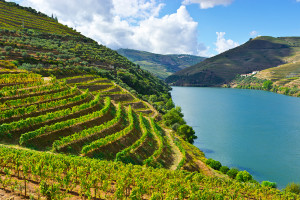
There is a wine that characterizes immediately the Douro, the Porto. This ambassador of Portuguese wines was born on poor soils and vertiginous hillsides overlooking the Douro River. Beyond Porto, this region is increasingly recognized by the excellence of its red and white wines.
The Douro region is located in the Northeast of Portugal, surrounded by the mountains of ” Marão ” and ” Montemuro “. The wine-growing area occupies 40 000 hectares. The soils of Douro consist mainly of shales, however, in some areas there are granite soils. These soils are particularly difficult to work because of the steep terrain. The vines that line the sides of this majestic valley offer a beautiful view. The Douro Valley is a pearl of the world that was classified a UNESCO World Heritage December 14, 2001.
“ The Douro Valley is a pearl of the world ”
Portugal, like Spain, produces wine since ancient times. The alliances between Portugal and England plays a considerable role in the story of it’s vineyards. The vineyards of Porto has a unique destiny from the beginning due to the exchanges with the English. From 1387, Porto is the theater of the marrriage between João I and Philippa of Lancaster, daughter of John of Gaunt, symbol of the military alliance between the two nations.
Therefore, Porto became a stronghold of trade between the two countries. The number of shipyards is increasing during the fourteenth and fifteenth centuries. Trade also contributes to the development of the vineyards in Douro Valley. Due to the conflict between France and England, the English are leaving Bordeaux wines in favor of those of Porto.
4. Alentejo
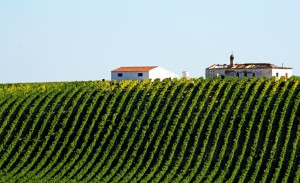
The Alentejo is one of the great wine regions of Portugal. There are vast plains of sight here. This hot and dry region has benefited countless investments in the wine sector which has enabled it to produce some of the best Portuguese wines and gain international recognition. The Alentejo is located in southern Portugal. This is a very sunny area allowing the perfect ripeness. The temperatures are very high in the summer, hence the need to irrigate the vines.
The relief that dominates the area is plain, however, in the region of ‘Portalegre’ there is a mountain “São Mamede”. The soils are very heterogeneous, namely: clay, granitic, limestone and shale. However, the low soil fertility is an common element in all soils.
In the Alentejo, there are countless varieties planted. Among the whites we mainly note the following: “Roupeira”, “Antão Vaz” and “Arinto”. The mpost important red wines are “Trincadeira”, “Aragonez”, “Castelão” and “Alicante Bouschet” (the latter is a French grape that has adapted well to the climate of this region). White wines “DOC Alentejo” are generally sweet, slightly acidic and have aromas of tropical fruits. The reds are rich, silky and have intense aromas of wild fruits and berries.
Beyond the production in sub-regions “DOC” the Alentejo provides a big amount of “Vinho Regional” (Regional Wine). Producers opt several times to this official designation that allows to include other varieties which are in the legislation of wines “DOC”. Thus it is possible to find regional wines produced from “Touriga Nacional”, “Cabernet Sauvignon”, “Syrah” and “Chardonnay”.
3. Lisbonne
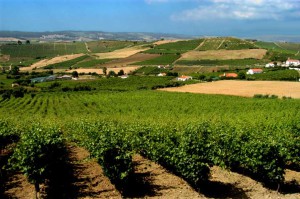
In the Lisbon region –a region with a long history of wine-, the vineyard consists of traditional Portuguese grape varieties and prestigious international varieties. A huge variety of wines are produced here, possible by a variety of reliefs and microclimates concentrated in small areas of the region.
The Lisbon region, previously known under the name of ” Extremadura ” is located in the northeast of the city of Lisbon. The climate is mild due to the influence of the Atlantic ocean. The summers are cool and the winters are mild.
This area has good conditions for producing quality wines. However, for about fifteen years, the Lisbon area was best known for producing wines in large quantities and poor quality. Thus began a restructuring process of the vineyards and the cellars. The most significant restructuring took place in the vineyards, with new varieties planted for their quality and not for their yield. Today, the wines of the region of Lisbon are known for their excellent price/value rate.
The area has focused on the planting of Portuguese and foreign grape varieties, and in 1993 the category of “Vinho Regional Estremadura” was created, which is now called “Vinho Regional Lisboa”. Farmers were encouraged to explore the potential of different varietals, and yet most products are the wines under the “Regional wine” appellation, because the regulations for DOC wines is very restrictive in terms of using grape varieties.
https://www.youtube.com/watch?v=yesgWMEPO8w
2. Barraida
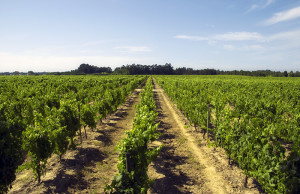
The region of ” Bairrada ” is rich in the production of red and white wines made from traditional grape varieties such as ” Baga ” and other imported ones as “Cabernet Sauvignon”. Bairrada is situated near the coast, between ” Agueda ” and ” Coimbra “.
This area is very close to the sea, which explains his typical atlantic climate where winters are mild and rainy, while the summers are tempered by winds from the Atlantic. Most wineries are small. The area occupied by vineyards (mostly on calcareous clay or sandy soil) does not exceed 10 000 hectares.Wine production in the region is controlled by cooperatives, small and medium enterprises and small producers. The latter commercialize the wines called ” Vinhos de Quinta ” that have grown in importance in recent years.
It is the twentieth century when the region of Bairrada becomes an area that is growing quality wines. However, it produced wine since the tenth century. The scientist Antonio Augusto studied wine production systems and defined the borders of the region in 1867. Twenty years later, in 1887, the Practical School of Viticulture of Bairrad was founded designed to promote the wines of the region and to improve cultivation and production techniques. The first practical result of the school was the develpoment of a sparkling wine in 1890.
1. Madère
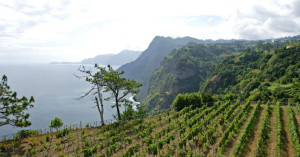
Madeira wine is produced in this island nicknamed “the Pearl of the Ocean”. This wine has an extraordinary life, complex aromas and exceptional flavor that has earned him a worldwide reputation. The island of Madeira has a typical Mediterranean climate: pleasant temperatures throughout the year and a low thermal amplitude despite the high humidity.
Its soils are volcanic in origin and very fertile. The island’s relief is very irregular, this is why the vines are planted on volcanic hillsides. The “DOC Madeira” covers 450 hectares of vineyards that are planted with red and white varieties. The grape ” Tinta Mole ” is the most common in the area, however there are rarer varieties called ” Sercial “, ” Boal “, ” Malvasia ” and ” Verdelho “.
“ Vines are planted on volcanic hillsides ”
The best Madeira wines are those from vines planted in low-lying areas. The grape variety “Malvasia” has always been the most distinguished in the production of Madeira. There are also other grape varieties which are used in the production of Madeira: like”Sercial”, “Boal” and “Verdelho”, which confer four levels of sweetness in wine (sweet, semi-sweet, semi-dry and dry). Madeira wine began to be exported around the world from the XVIII century.
The wine barrels were transported by boat, that is how they were subject to countless variations of temperatures before arriving at destination. Once there, the wines unsold returned to their starting point. Once back on the island of Madeira, someone recognized that the wine was more aromatic and had a new flavor. From this fact, and from 1730 barrels of Madeira began the long expedition with the goal of obtaining better quality.
Our investigation of Portuguese wines has come to it’s end. Thank you for staying with us. If you want to know more, we wrote about the greatest wine regions of Spain, Italy and France as well. Stay tuned!
